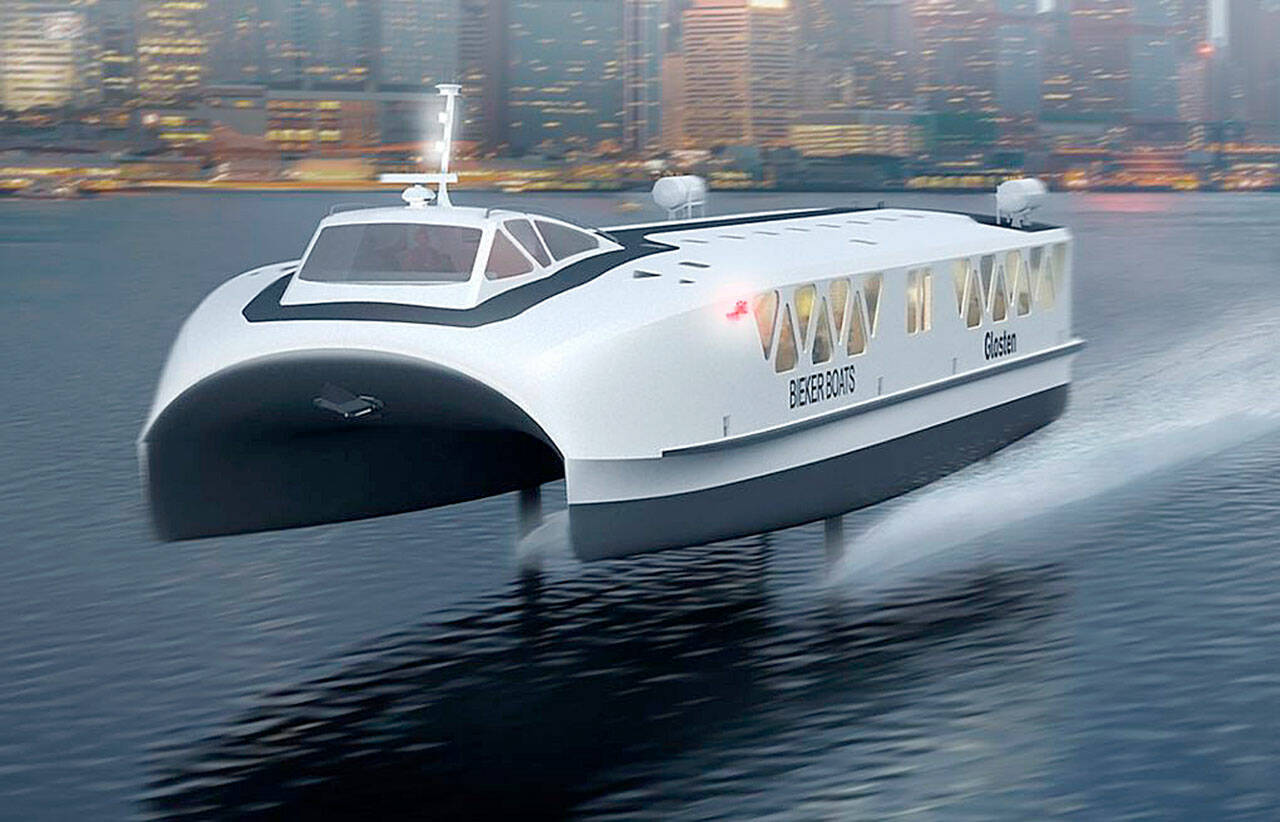Imagine a high-speed, fully electric passenger ferry hydrofoil traveling the Bremerton-Seattle fast ferry route on a single battery charge, saving the environment from another discharge of diesel exhaust.
It’s not just a pipe dream for Kitsap County commuters.
Local transportation experts are developing a blueprint for such a vessel. When the design is completed, a consortium of agencies that includes Kitsap Transit — the ultimate operator of the vessel — will seek funding to build the state-of-the-art vessel. It could end up being a model for passenger-only ferries around the world.
A hydrofoil ferry — featuring a hull that rides just above the waves — can offer a safe, reliable and cost-effective transit option, said John Clausen, Kitsap Transit executive director. The innovative ferry with a lightweight carbon fiber hull would reduce the environmental impact on air and water quality, and marine life, planners noted.
The Bremerton to Seattle fast ferry route was recently selected by the vessel’s developers as the route to debut the hydrofoil ferry once federal monies are obtained to build it.
The fast ferry currently running the sailing is an electric boat with a diesel generator that carries 118 passengers. The hydrofoil version will be able to transport 150 people.
“By going up on hydrofoils, the new boat has virtually no wake,” Clausen said.
The Bremerton-Seattle route travels through Rich Passage, a narrow waterway between South Kitsap and Bainbridge Island. Concern has been voiced by environmentalists that the wake created by the existing 140-foot ferry damages the shoreline. An all-electric boat has a minimal wake and would allow an unlimited number of sailings through Rich Passage, Clausen noted.
“When you are running electric motors versus diesel engines, it’s going to be better for the whale population and other sea life that [otherwise] is impacted by the noise generated by the vessels on Puget Sound,” he said.
The soonest Kitsap County commuters would be able to board the futuristic ferry would be 2025, Clausen said.
The next step is to obtain funding so that design work can be completed and construction started. Washington Maritime Blue is seeking $100 million for up to eight projects, one of which may be the final design and potential construction of the high-speed hydrofoil, said Jennifer States, its vice president of projects and strategy.
“We are fairly confident we can find this other funding,” States said, adding the recently enacted infrastructure bill contains monies for ferries.



